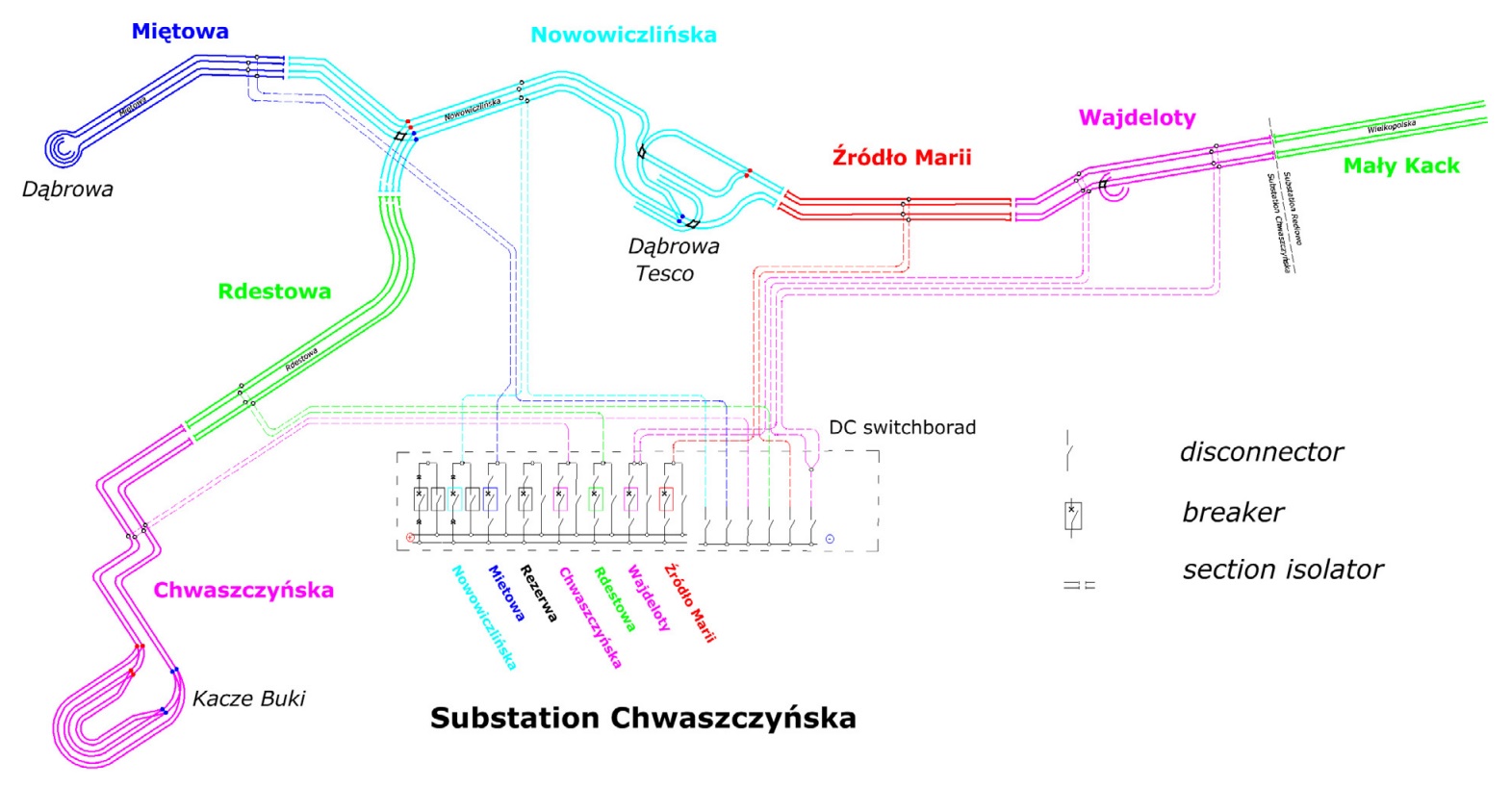 Nowadays the issue of electric energy saving in public transport is becoming a key area of interest which is connected both with a growth in environmental awareness of the society and an increase in the prices of fuel and electricity. One of the possibilities to reduce energy consumption in urban public transport is to increase the extent of regenerative braking energy utilization. This can be achieved by its accumulation in the supercapacitors or a change in the topology of the power supply system in order to facilitate its flow. The article presents an analysis of applying these two options for increasing recovery energy usage on the example ofthe trolleybus network in the Polish city of Gdynia. For the purpose ofthe analysis there was used a simulation model of trolleybus traction power system based on the Monte Carlo simulation method. The research results and findings can be applied in other similar trolley or tram networks.
Nowadays the issue of electric energy saving in public transport is becoming a key area of interest which is connected both with a growth in environmental awareness of the society and an increase in the prices of fuel and electricity. One of the possibilities to reduce energy consumption in urban public transport is to increase the extent of regenerative braking energy utilization. This can be achieved by its accumulation in the supercapacitors or a change in the topology of the power supply system in order to facilitate its flow. The article presents an analysis of applying these two options for increasing recovery energy usage on the example ofthe trolleybus network in the Polish city of Gdynia. For the purpose ofthe analysis there was used a simulation model of trolleybus traction power system based on the Monte Carlo simulation method. The research results and findings can be applied in other similar trolley or tram networks.
One of the distinctive features of electrical vehicles is their capacity to return electricity to the traction network, which is called energy recuperation. Recuperation reduces energy consumption
in transport through energy re-use. In recent years, the issues related to increasing the efficiency of regenerative braking have been assuming growing importance. This is caused by the increased number of vehicles equipped with the recuperation module and the necessity of curbing electricity consumption due to environmental and financial factors. Energy storage devices, which allow the storage of recovered energy, are increasingly used. They include supercapacitors and flywheels. Today, a vast number of such storage devices are already applied in undergrounds, trams, and trolleybuses. As a result, the optimization of recuperation energy storage devices is growing in significance [1–6].
Please, see full lenght paper here





